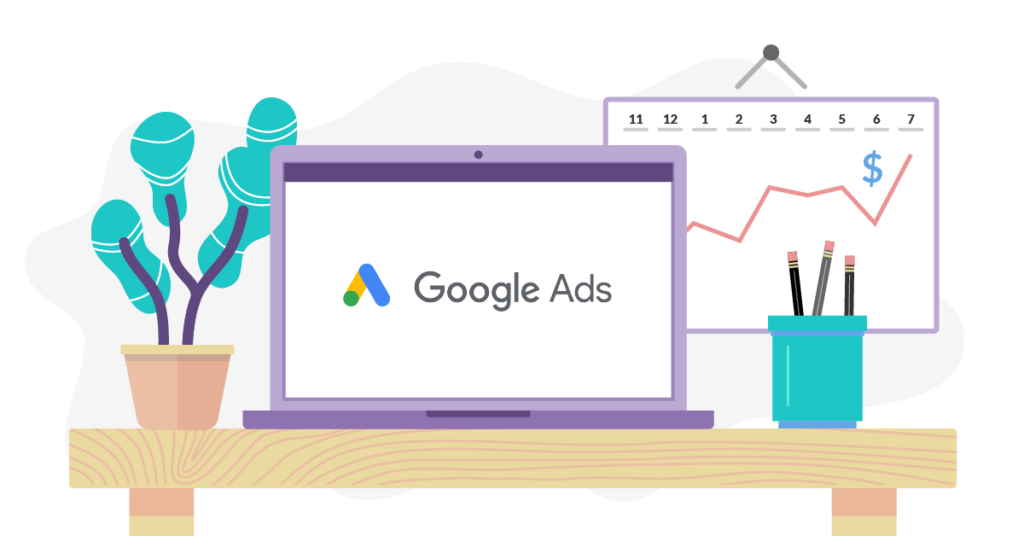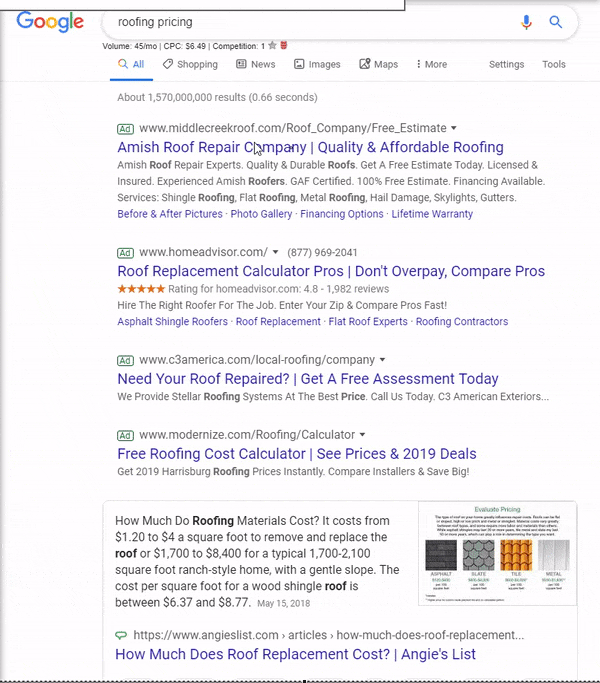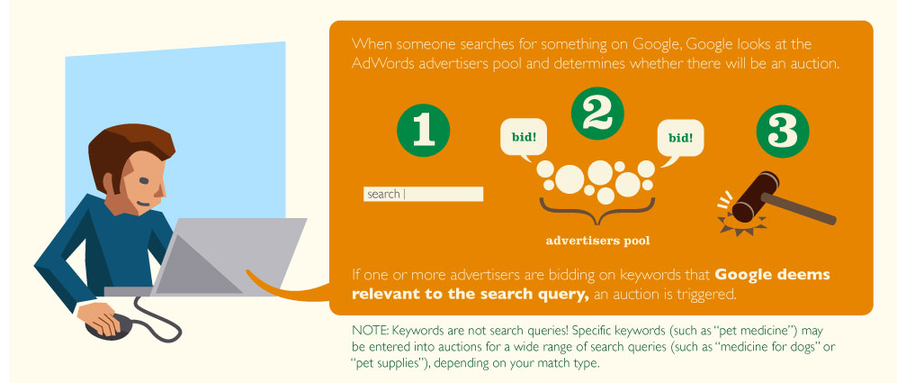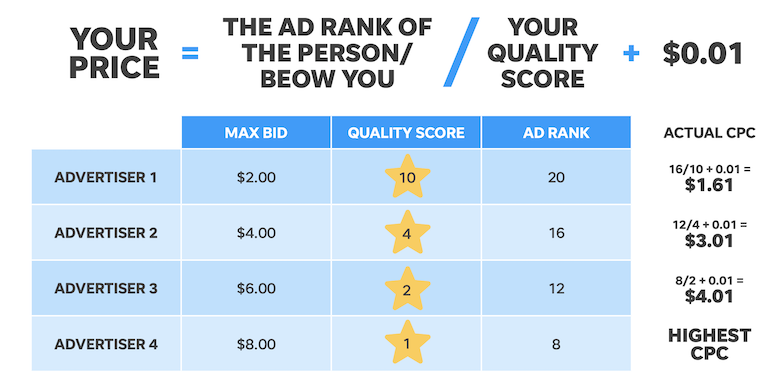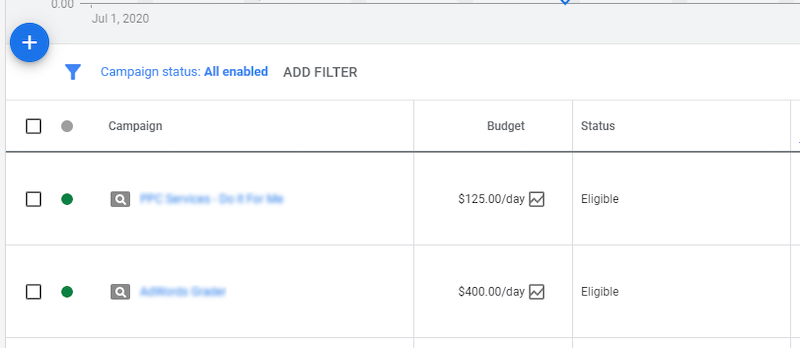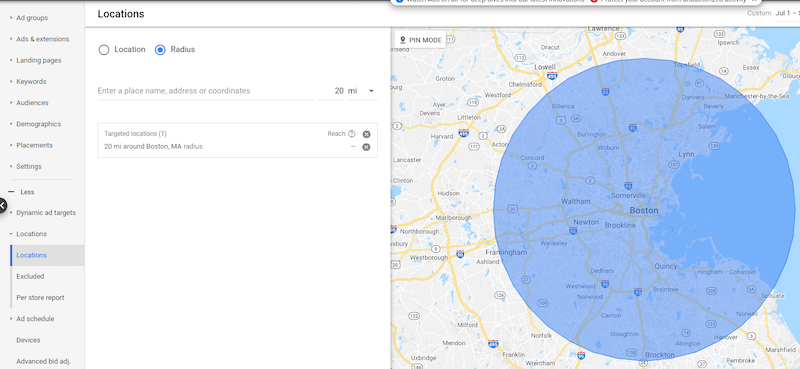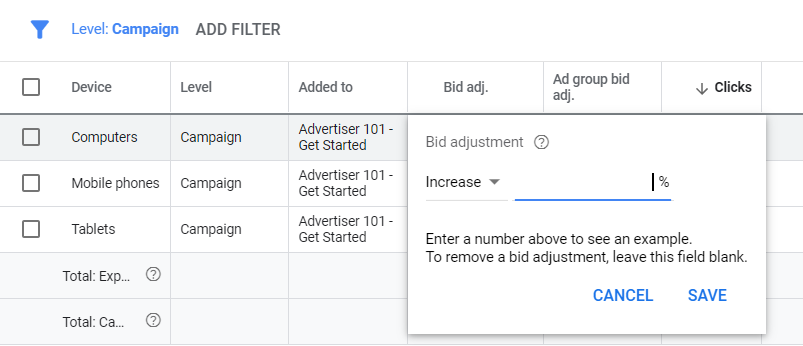How much does Google Ads cost? It’s a reasonable question, and one we hear all the time, especially from newcomers to paid search.
In 2021, 65% of small-to-midsized businesses (SMBs) invest in pay-per-click (PPC) advertising. If you want to get the most attention for your products and services, the pay-per-click approach has become the norm.
Without a solid advertising plan in places such as Google Ads pay-per-click, marketing your business online will literally get ignored and overlooked in online searches.
While Google Ads offer an impressive return on investment (ROI) of $8/₦4,640 for every $1/₦580 spent, many businesses wonder about the cost of Google Ads and how much they should spend on Google Ads.
In this article, we will look at the typical Google Ads costs and understand how to get the most from your Google PPC campaigns.
Table of Contents
What Are Google Ads?
Google Ads, previously called Google AdWords, is Google’s PPC advertising platform. The Google search advertising platform allows businesses to display concise advertisements, videos, product listings, or service offerings to potential customers.
You can use it to create advertisements, bid on specific keywords, and determine how much you’re willing to pay for every click on your advertisement because Google Ads operates on an auction system, which happens in real-time.
When users search for a keyword you’ve selected, if your bid is higher than what other advertisers bid on that keyword, your advertisement will appear at the top of the search results with a small tag next to it indicating that it’s a paid result.
The best part of Google PPC costs is that you only pay when a user actually clicks on your ad. It doesn’t matter how many times it’s displayed or how many people see it — you only pay when someone clicks and visits your website.
The cost-per-click fee varies depending on several factors that can influence the final charge.
You can also set daily and monthly budgets on a campaign-by-campaign basis. So, after you find a winning keyword to bid on and a winning ad to run, you can let your campaign run knowing that you won’t go over a specific budget.
How does Google Ads work?
In order to get a true grasp of what Google Ads will cost you, you first need to understand how the platform works. And one of the biggest misconceptions about Google Ads is that advertisers with the most money to spend have the most influence.
While a bigger ad budget never hurts, Google Ads is actually a more level playing field than many new advertisers realize.
The Google Ads auction
Google Ads functions in essentially the same way as an auction. Let’s take a look at how this process works.
When a user types a word or phrase (known as a search query) into the Google search bar, Google then looks to see if that query contains keywords that advertisers are currently bidding on. If Google Ads advertisers are actively bidding on any of the keywords in the user’s search query, the ad auction begins.
Ad Rank
Ad Rank determines your ad position and whether your ads are eligible to show at all. Generally speaking, the ad with the highest Ad Rank gets shown in the top position and the ad with the second-highest Ad Rank gets shown in the second position, and so on.
Ad Rank is calculated by your maximum bid and Quality Score:
Your Quality Score is dependent on a number of variables, Once your Quality Score and Ad Rank have been calculated, Google uses this data to determine how much you’ll pay each time someone clicks on one of your ads. This formula looks like this:
This is how Google Ads works in a nutshell, and why advertisers with a small budget are able to advertise just as effectively on Google as big-budget companies.
Additional variables in the Google Ads auction
There are several other variables that impact your Ad Rank—and ultimately, your ad spend—but the maximum bid and Quality Score are the important ones to know. Here are some of the additional factors that influence your Ad Rank:
- Ad relevance
- Landing page relevance and experience
- Auction-time quality
- The device, location, and context of users’ searches
- Alternative bidding methods
- Alternative ad formats
How does my Google Ads budget get spent?
A common scenario many new Google Ads users find themselves in is that their ad budget is getting spent much more quickly than they had anticipated. Seeing what you allocated for the month get spent up in a matter of days is not only disconcerting; it’s also what causes many businesses to believe that Google Ads are prohibitively expensive. This isn’t necessarily the case; more often than not, it’s the result of a misunderstanding of how Google Ads budgeting works. So let’s set the record straight.
Starting your Google Ads budget
You can think of your Google Ads budget in the same way you think of any other budget: You begin with a basic amount that will reflect the majority of your budget, then allow you some wiggle room in case things change or something unexpected occurs. Budgeting on a per-campaign basis is a good place to start when it comes to Google Ads budgeting. Let’s begin with daily spending budgets.
For Google Ads budgeting in particular, a solid approach to start with is budgeting on a per-campaign basis.
Daily budgets
Each of your Google Ads campaigns has its own settings tab where you can control specific parameters of each campaign independently of other campaigns in your account. As such, each of your campaigns should have its own daily budget. If you’re running several campaigns simultaneously, make sure to prioritize them so you can spend your budget wisely. For example, Campaign A advertising your best-selling product may be more important to your business than Campaign B, which promotes content to prospective customers at the top of the funnel. In this case, you’d likely want to allocate a larger daily budget to Campaign A.
If you’d like to plan a monthly PPC budget, all you need to do is calculate the breakdown of daily budgets for each campaign, and allocate your funds depending on the priority of each campaign. (You can now set a monthly spend limit).
How daily budgets get spent
Let’s say you have an ad with a CPC of $0.25/₦145, and that you’d like to receive 300 ad clicks per day. Using these figures, you can calculate an estimated daily budget:
$0.25/₦145 x 300 = $75/₦43,500
In this example, $0.25/₦145 is the most that you’d be charged if $0.25 is your maximum CPC. However, the actual amount you could be charged per click can change, depending on the variables of each individual ad auction. Just remember that if you set your maximum CPC at $0.25/₦145, you’ll never pay more than that for a click, but you could end up paying less.
Just remember that if you set your maximum CPC at $0.25, you’ll never pay more than that for a click, but you could end up paying less.
Factors that influence Google Ads to spend?
Dayparting
Also known as ad scheduling, dayparting is the practice of specifying when you want your ads to appear to prospective customers. Although your ads will still have to go through the ad auction process, you can tell Google when you want your ads to be displayed.
This is especially useful for local businesses that want to attract customers to a physical location through their ads. If you run a bakery that closes at 7 pm, for example, you may not want your ads to be shown outside your normal business hours. Alternatively, you can specify that your ads run continually throughout the day, but allocate a greater portion of your daily budget for hours during which you want increased visibility.
Geotargeting
Just as you can allocate more of your Google Ads budget to certain times of day, you can also spend more of your budget on certain geographical areas. This technique is known as geotargeting.
Geotargeting allows you to prioritize the display of your ads to searches coming from specific areas. These areas can be as large as a state or province, or as small as a three-block radius from your store.
Google Ads geotargeting can be an excellent way to capitalize on growing mobile traffic trends and on-the-go shopping habits of today’s consumers, and it might factor into how you allocate your daily ad budget. For example, you may want your ads to appear alongside relevant searches in a particular state, but you could also allocate more budget to searches conducted in a specific city or even neighborhood.
Device targeting
Long gone are the days when prospects searched exclusively from desktop browsers. Today, consumers are searching online across multiple devices (often at the same time), which means you need to pay attention to where your most valuable leads are coming from. This is where device targeting comes into play.
Let’s say that you want to appear on results across both desktop and mobile searches, but that mobile traffic is more valuable to you. You could specify that a portion of your budget is used for desktops, but a greater portion is allocated to mobile devices. You may even want to devote more money to traffic coming from specific types of mobile devices, depending on what you’re advertising or your ad copy.
Setting a daily budget and understanding how it will be depleted are the most important aspects of budgeting for PPC, but it pays to be aware of how advanced targeting options can affect your ad spend.
How Much Should You Spend On Google Ads?
In 2021, the average Google Ads cost per click was about $1/₦580 to $2/₦1,160 on the Google Search network. Some newer niches may still see lower costs, while more established businesses, might see higher cost-per-click averages.
Google Ads pricing is extremely subjective, depending on the expected revenue you will generate from a newer customer.
If you are just starting to run Google Ads, it is a good idea to begin conservatively. The best way to ensure you don’t overspend on Google Ads is with a low daily budget.
Once you get some data to see the results of your ad campaigns, you can later increase this when you start to see a better return on investment (ROI).
This is a huge benefit of online advertising. With conventional print ads, you cannot test as effectively. But with online pay-per-click ads, you can keep tweaking and adjusting as much as you like, and see what gives you the best return on investment.
Before you consider spending any money on Google advertising, it’s important that you first:
- Create attention-grabbing, high-quality ad copy
- Do keyword research based on what your customers and prospects are clicking on in your industry
- Work on your landing pages for your products and service offerings, so that they convert well once a person clicks
- Observe what it working for your competitors in your space, and find ways to create similar or more compelling offers
What Is The Ideal Budget For Google AdWords?
Start Small. If you’re a beginner, try an average daily budget of $10/₦5,800 to $50/₦29,000. Check your account daily after applying a new budget to see how your campaigns have performed. You can set a shared budget with the amount you’re willing to spend across multiple campaigns for the same client.
Why advertise on Google Ads?
While Google Ads pricing varies and depends heavily on your business, industry, strategy, and competitors, the platform offers an immense amount of advantages. If you’re thinking about getting started with Google Ads, but are on the fence, this breakdown of Google Ads benefits can help.
Three reasons companies invest in Google Ads include:
1. Budget control
Google Ads blows most other advertising channels clear out of the water when it comes to budget control. There is absolutely no minimum investment required to create a Google Ads account or run a Google Ads campaign.
You could launch a test campaign on a ₦2,500/day budget if you really wanted.
Your results will depend, again, on how competitive the niche and keywords you select are, but the point is that you can then increase your budget as necessary. This leads right to the next advantage of Google Ads…
2. Scalability
Everything you do with Google Ads happens in real-time.
That means you can scale up as soon as you’ve identified a successful campaign, or you can scale down as soon as you see a campaign underperforming. You’re not locked into any contract, required monthly spend, or anything like that.
The potential to scale really is unlimited with Google Ads. If you have a certain campaign that’s bringing you great results with a spend of ₦205,930/month, you can instantly increase that to ₦411,860 or beyond!
3. Analytics
You have access to every last bit of data related to your campaign performance with Google Ads.
You can see exactly how many times your ad got served, how many people clicked on it, how many people converted after clicking on it, what time of day the ad is most successful, information about what sorts of users click on your ad, and more.
The amount of data available through your Google Ads dashboard is truly staggering. Most forms of traditional advertising — TV, radio, newspaper — come with extremely limited analytics. You don’t actually know how successful your campaigns are, because you don’t know how many people see your ads or take action because of them.
Is the Google Ads price right for you?
As I’ve stated, there are numerous factors that can have a significant impact on the cost of running a PPC campaign, but remember: almost any type of business can make Google Ads work for them!
If you’re looking for help building your Google Ads budget, as well as developing your campaign, our ads campaign team can help.

